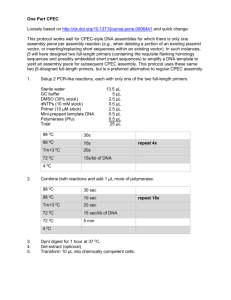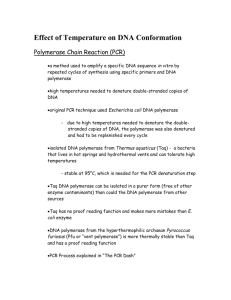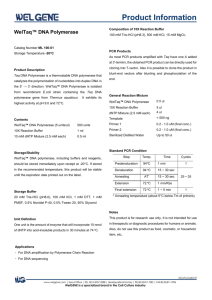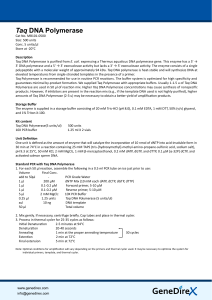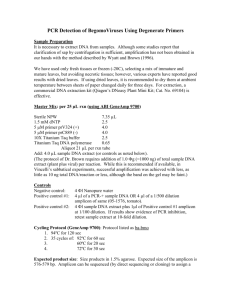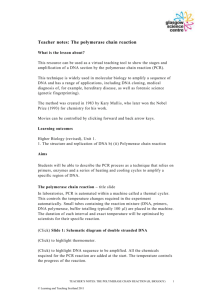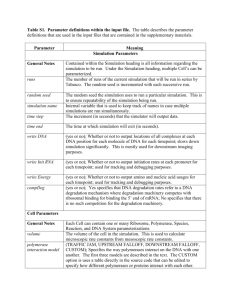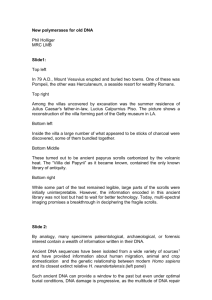The Polymerase Chain Reaction (PCR) The polymerase chain
advertisement
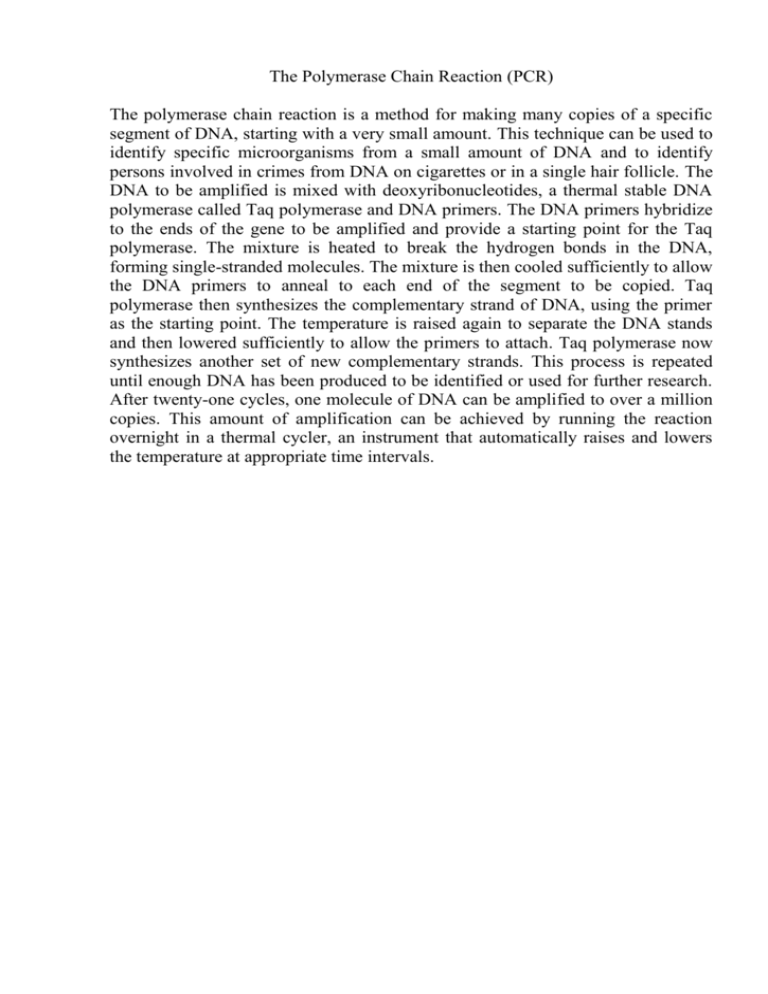
The Polymerase Chain Reaction (PCR) The polymerase chain reaction is a method for making many copies of a specific segment of DNA, starting with a very small amount. This technique can be used to identify specific microorganisms from a small amount of DNA and to identify persons involved in crimes from DNA on cigarettes or in a single hair follicle. The DNA to be amplified is mixed with deoxyribonucleotides, a thermal stable DNA polymerase called Taq polymerase and DNA primers. The DNA primers hybridize to the ends of the gene to be amplified and provide a starting point for the Taq polymerase. The mixture is heated to break the hydrogen bonds in the DNA, forming single-stranded molecules. The mixture is then cooled sufficiently to allow the DNA primers to anneal to each end of the segment to be copied. Taq polymerase then synthesizes the complementary strand of DNA, using the primer as the starting point. The temperature is raised again to separate the DNA stands and then lowered sufficiently to allow the primers to attach. Taq polymerase now synthesizes another set of new complementary strands. This process is repeated until enough DNA has been produced to be identified or used for further research. After twenty-one cycles, one molecule of DNA can be amplified to over a million copies. This amount of amplification can be achieved by running the reaction overnight in a thermal cycler, an instrument that automatically raises and lowers the temperature at appropriate time intervals.



